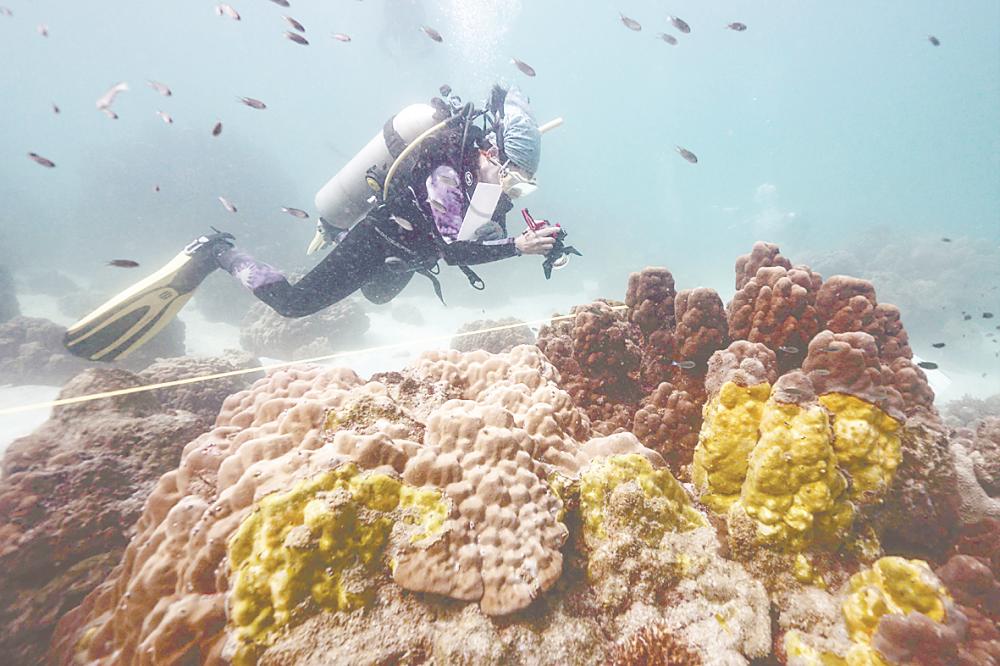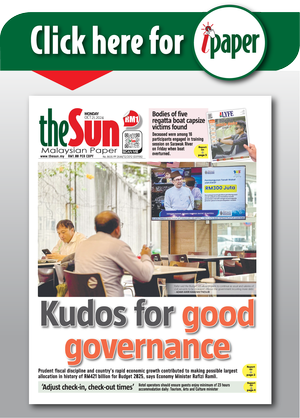HUMAN civilisation has always been propelled by the extraction of resources. The spice-rich Malay Archipelago lured traders from China, India, Persia and as far as Europe, as spice was
the most sought-after commodity at
that time.
During British rule in the 18th century, Malaya was one of the priceless colonial possessions of the British as it was rich in various resources, such as tin and rubber. Thereafter in 1910, oil was discovered off the coast of Sarawak and it is now one of Malaysia’s most important exports.
Nevertheless, these minerals are non-renewable. The depletion of land-based minerals has led to the seeking of mineral resources beyond national maritime territory into the deep seabed. The discovery of high-quality minerals in the deep seabed started in the late 19th century.
Deep seabed mining (DSM) is the process of extracting minerals from the ocean floor, with a focus on three primary types of minerals: polymetallic nodules, cobalt-rich ferromanganese crusts and polymetallic sulphide.
These minerals can potentially support the mass production of essential electronics, such as smartphones and tablets, as well as stimulate the development of green technology sectors such as industries involving electric cars and wind turbines.
The International Seabed Authority (ISA) is an organisation established under the United Nations Convention on the Law of the Sea 1982 (UNCLOS). The ISA regulates and controls all mineral-related activities in the international seabed area.
Although commercial DSM has not started, several companies are trying
to make it a reality. These companies include, among others, De Beers Group, China Minmetals Corporation, UK Seabed Resources Ltd and other establishments from Tonga, Nauru, Germany, Japan and Singapore. Although there are pressing needs to venture into this industry, Malaysian companies have yet to be actively involved in DSM activities.
Recognising the imminent prospects of DSM and its potential impact on the marine environment, the world reached a pivotal moment for ocean protection on March 5, 2023.
The UN has adopted the High Seas Treaty, which is the world’s first treaty
to protect high seas biodiversity. The agreement is opened for signature in New York for two years starting Sept 20, 2023, and Malaysia is expected to be a signatory.
The treaty could assist in protecting the oceans from possible environmental degradation caused by DSM activities for metals such as silver, gold, copper, manganese, cobalt and zinc.
Nevertheless, DSM activities will not face scrutiny as provisions of the treaty do not overrule regulations laid down by the authorities that oversee existing high seas activities.
For instance, the High Seas Treaty would not regulate shipping activities managed by the International Maritime Organisation or the ISA, which oversees DSM. In other words, DSM would not face any obstacles or restrictions under international law.
Challenges for Malaysia
Malaysia faces several challenges in venturing into DSM. Firstly, limited understanding of the deep-sea environment.
Exploring the deep sea requires extensive scientific data, which Malaysia currently lacks due to limited engagement in deep-sea expeditions.
Secondly, high costs and technological requirements. Deep-sea exploration demands advanced technological equipment, vessels and substantial financial investment.
Costs could reach up to US$1.4 billion (RM6.21 billion) over five years, with ocean research vessel operations alone ranging from US$10,000 to US$40,000 per day. The estimated cost of processing minerals is an additional US$135 million.
Thirdly, there is a need for legal and technical expertise, and Malaysia must develop expertise in both aspects with regards to DSM. Although Malaysia is
a state party to UNCLOS, not all provisions, particularly those related
to the deep seabed, have been incorporated into domestic legislation.
Without comprehensive legal frameworks, Malaysia could face challenges in DSM activities and partnerships.
Becoming state party to treaty
Malaysia plays a pivotal role as a steward of two of the world’s busiest maritime corridors – the straits of Malacca and Singapore.
As a littoral state, Malaysia has consistently ensured safe navigation and minimised maritime risks within these vital waterways. This accomplishment highlights Malaysia’s significant contributions to the preservation and well-being of the marine environment.
Malaysia has long been a key player in maritime affairs and it is now imperative for the nation to expand its commitment by addressing the protection of biodiversity beyond national jurisdiction through the High Seas Treaty.
Becoming a state party to this treaty would grant Malaysia a meaningful voice in safeguarding marine areas beyond its national jurisdiction.
Adopting the High Seas Treaty would not require a complete overhaul of existing local laws. For instance, although Malaysia ratified the UNCLOS in 1996, the Territorial Sea Act was only enacted in 2012. Despite the delayed legislation, UNCLOS continues to be effectively implemented in Malaysia.
Similarly, any delay in Malaysia’s membership in the High Seas Treaty could place the nation at a disadvantage regarding issues related to biodiversity beyond national jurisdiction.
Furthermore, joining the High Seas Treaty would align with Malaysia’s national interests.
It would strengthen the nation’s influence in global maritime governance while reinforcing its commitment to environmental conservation, ensuring a balanced approach to economic and ecological priorities.
Dr Mohd Hazmi Mohd Rusli is an associate professor at the Faculty of Syariah and law, Universiti Sains Islam Malaysia and associate fellow at the Asian Institute of International
Affairs and Diplomacy,
Universiti Utara Malaysia.
Comments: letters@thesundaily.com









